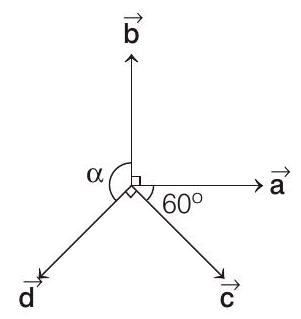Vectors 3 Question 3
3. If
(2009)
(a)
(b)
(c)
(d)
Show Answer
Answer:
Correct Answer: 3. (c)
Solution:
- Let angle between
Since,
So,
an
Let
which is a contradiction, so option (c) is correct.
Let option (d) is correct.

which is a contradiction, so option (d) is incorrect. Alternatively, options (c) and (d) may be observed from the given figure.






